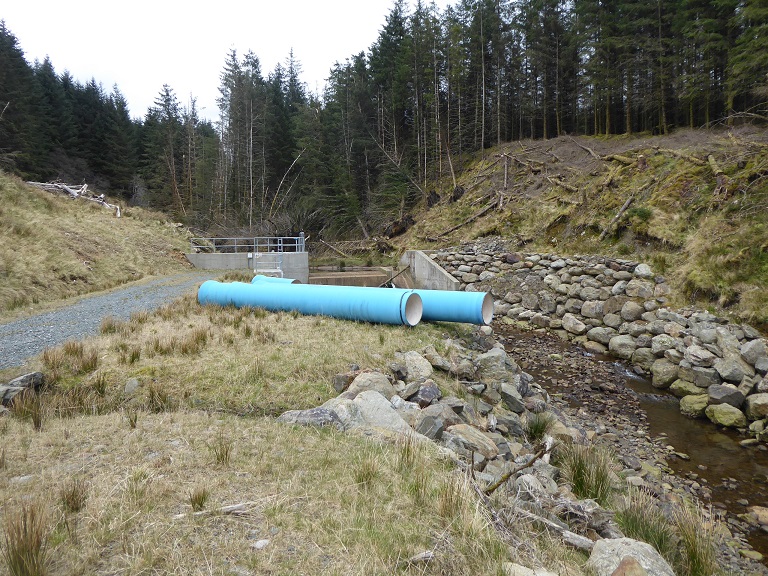
I have been thinking and discussing with various contacts the claim by James Stuart, convener of the Loch Lomond and Trossachs National Park Authority, that it conducts a risk based approach to planning enforcement (see here). The evidence from the Donich Water hydro scheme, situated above Lochgoilhead, which I visited earlier this year, suggests the National Park has its head in the sand. I have said as much to Mr Stuart and, as a start, have asked him to ensure his staff take appropriate enforcement action to remove these pipes. This post takes a look at the wider failures with the Donich Water Scheme which the LLTNPA needs to address.
Background to the Donich Water scheme
Unlike most other hydro schemes within the National Park, the Donich Water planning application met with a significant degree of local opposition when it was lodged in 2013 (see here). This was in the main prompted by concerns about the impact of the scheme on a popular local round walk, which had been designated a core path, and the Eas Garbh waterfall.

Local residents, however, also expressed wider concerns about the impact on the local ecology and the noise that would be produced by the powerhouse. One resident, who deeply cares about the landscape and wildlife, set up a fantastic website https://hydro.donich.co.uk/ to increase awareness of the issues. Local residents were not supported by other public agencies, who all concluded the issues could all be successfully mitigated, or by national recreational and conservation organisations. LLTNPA officers, however, while dismissing the concerns of local residents in their report (see here pages 8-10) judged it prudent to refer the application to the Park’s planning committee for decision.
The Planning Committee, to their credit, expressed considerable concern about the impact of the hydro on the flow of the Eas Garbh at their meeting in December 2013. They asked for further assessments before approving the scheme at the end of August 2014 having been given assurances that various issues would be addressed.
Despite their concerns, local residents don’t appear to have been opposed to the scheme in principle. This may in part because this was one of the first three schemes developed on Forestry Commission land and they built in Community Benefits from the start. The Loch Goil Community Trust decided in 2014, at the time the scheme was approved, to take out a 7.5% investment in it and that was subsequently extended with support from the Scottish Government’s Renewable Energy Investment Fund to 20% (see here).
Subsequent events, however, have proved that many of the concerns expressed by the local community were well founded. Residents had expressed scepticism about promises that the core path would only be closed for three months during construction and were proved right. It was closed for seven months (see here) contrary to the original planning condition which stipulated it should be closed for a maximum of 3 months.
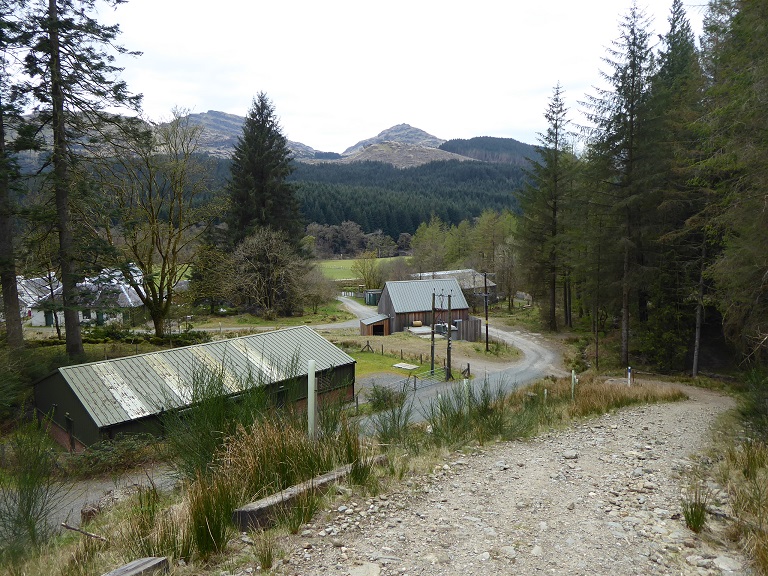
Local residents had also expressed concerns about the noise that would be emitted from the powerhouse and subjected the specification of the building to detailed scrutiny. Their concerns were dismissed by Environmental Health and Planning Staff:
“The condition relative to noise would adequately protect the amenity of nearby residents” (2014 Committee Report)
However, by 2018 the Public Authorities involved were forced to accept they had been wrong when the Developer submitted a further planning application to extend the power house building to reduce noise levels. Here is the explanation in the words of LLTNPA staff:
“The extension has been proposed to reduce noise levels from the powerhouse of the Donich Water hydro scheme. The hydro scheme was approved under planning reference 2013/0120/DET. Condition 13 of this permission requires the hydro scheme to keep within prescribed noise levels for perpetuity. The condition also required the applicant to undertake monitoring and assessment to demonstrate that noise generated by equipment is within these levels. A noise report was provided to the NPA and the condition subsequently discharged after input from Argyll & Bute Council Environmental Health.
Following the discharge of the condition, residents living adjacent to the powerhouse building wrote to A&BC Environmental Health expressing concerns that the findings of the report were not representative of actual noise levels. The letter contested that noise levels generated by the powerhouse were in excess of what had been recorded for the report and deemed acceptable in line with Condition 13.
The applicant has submitted this application in response to concerns from neighbours. The extension has been designed to direct noise from the powerhouse away from nearby properties into an uninhabited area. The principle of the extension is supported by Overarching Policy 2 of the Local Development Plan as it has been designed to improve the amenity of residents.”
Proof that professionals don’t always know best.
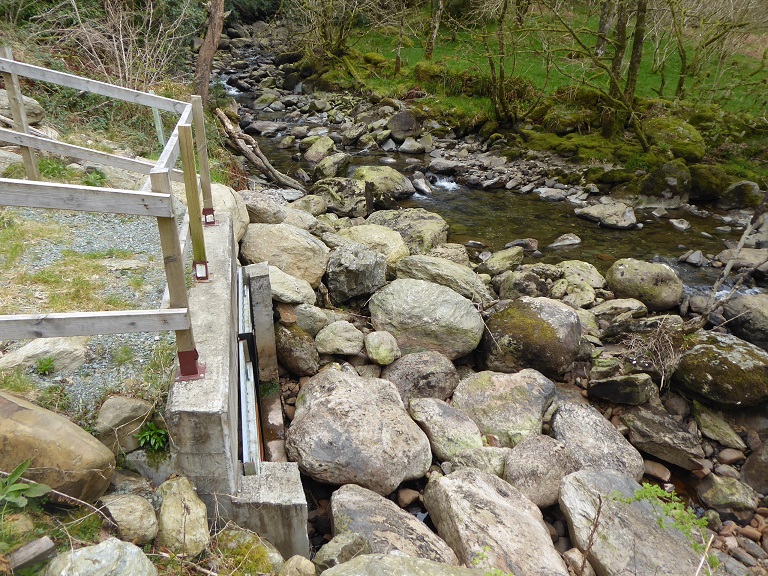
Unfortunately on the day I visited it was impossible to judge whether noise was still an issue because, as is quite common with our “flashy” west of Scotland rivers, the river flow was too low to produce any electricity.
Impact of the Donich hydro scheme
Unfortunately too, the Donich Hydro website ceased posting comments on the scheme in September 2016 soon after it had been commissioned and before the success or otherwise of the restoration work could be judged. My visit in April showed there have been serious failures both with the design approved by the LLTNPA and in the quality of the restoration work.

30 months after construction, the vegetation above the steepest section of the pipeline has hardly recovered. There appears to have been only minimal attempts at restoration, with a few trees planted. In most hydro schemes within the National Park, the most effective restoration work has involved the ground above pipelines. In this case too the LLTNPA required the land to be restored, requiring a turve management plan for example, but appears to have done nothing to enforce this. It appears that because this land is within industrial forestry and owned by the Forestry Commission/Forest and Land Scotland the LLTNPA has not enforced its usual standards.
I also wondered whether the prominent ugly marker poles are really necessary and whether the LLTNPA could not have insisted on something a little more sympathetic to the natural environment?
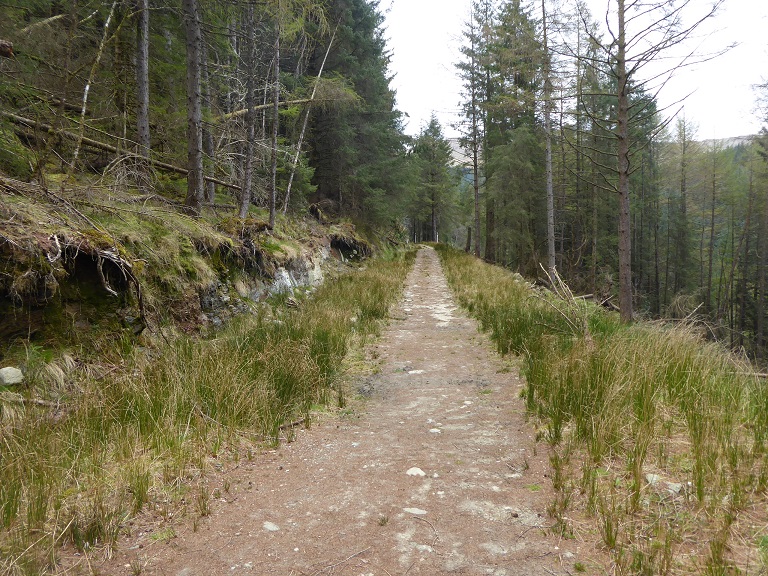
After the steep section, the pipeline follows the line of the core path. No attempt has been made to restore the prominent bench which has now been cut across the hillside. It has been left to revegetate itself and consequently has been colonised with rush. Some of the steep bank on the left may have been created by the original path but its contrary to the Park’s best practice guidance, being too steep to vegetate, and there has been no attempt to restore it. An opportunity to improve the walking experience – an open woodland ride with grasses and flowers would be good for butterflies etc – has been lost and the “restored” path has very little to commend it.
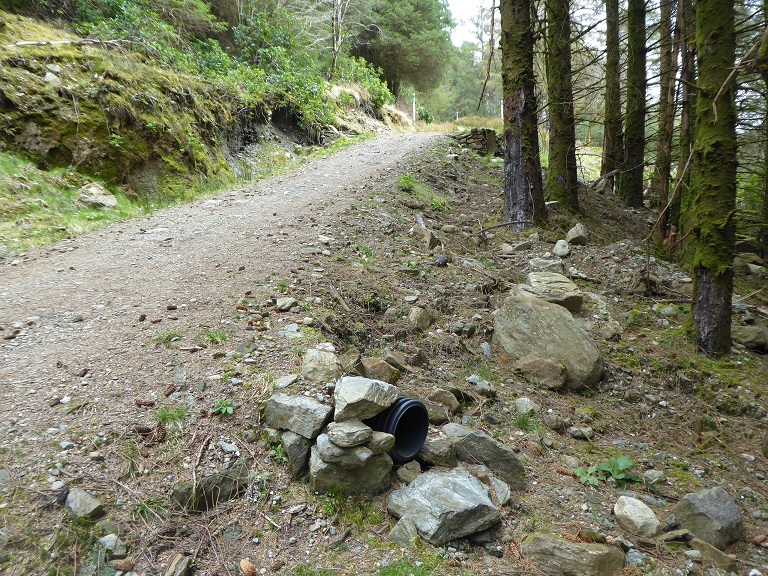
The quality of the culvert finishing was very poor and in this case the stone facing had already collapsed revealing the plastic pipe.
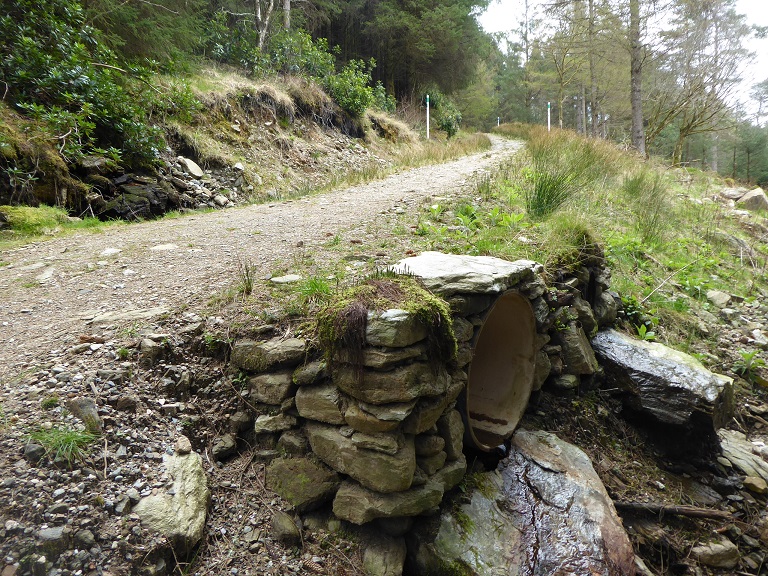
Its hard to see this culvert wall facing, built without any foundations, surviving long either. Note the bare banks and multiple pipe markers behind. Are these the standards we should expect in a National Park?
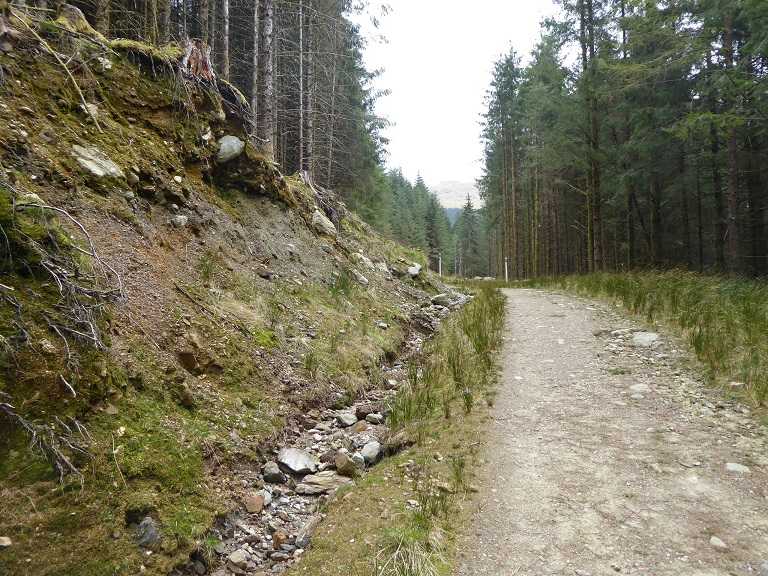 Further along the cuttings are even worse. Does no-one in Forestry and Land Scotland or the LLTNPA consider what sort of recreational experience this offers?
Further along the cuttings are even worse. Does no-one in Forestry and Land Scotland or the LLTNPA consider what sort of recreational experience this offers?

The pipeline then diverges from the path, taking a fairly direct line to the intake through a felled forest plantation while the core path bends to the right and descends to the Eas Garbh.
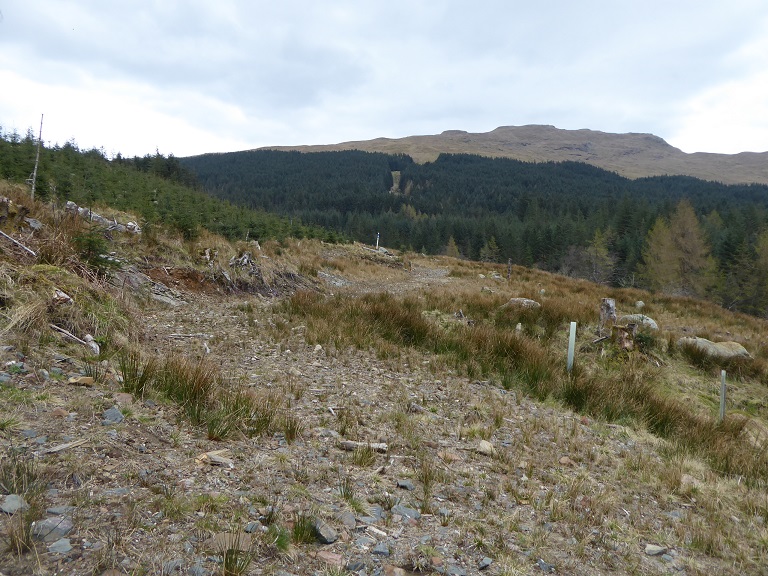 Apart from at Conic Hill (see here) I don’t think I have seen a worse example of pipeline “restoration” in the National Park. There has been no attempt to restore the landforms and the flat bench above the pipe has in effect created a permanent road across the hillside.
Apart from at Conic Hill (see here) I don’t think I have seen a worse example of pipeline “restoration” in the National Park. There has been no attempt to restore the landforms and the flat bench above the pipe has in effect created a permanent road across the hillside.
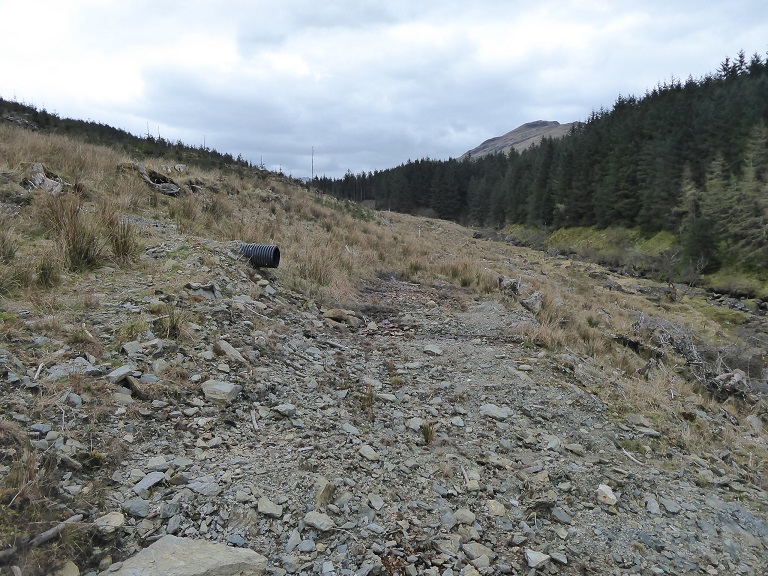
The National Park has simply been treated as industrial wasteland. What’s clear is that the LLTNPA has abandoned any attempt to enforce its normal standards on land owned by the former Forestry Commission.
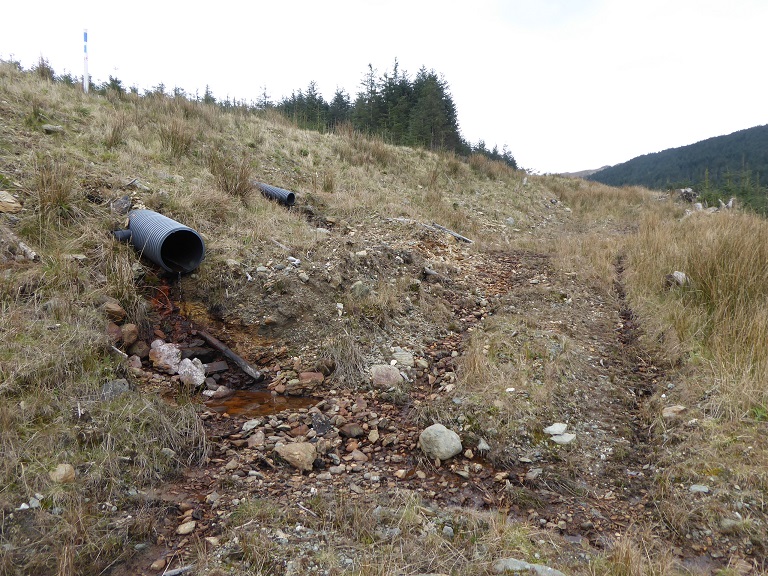
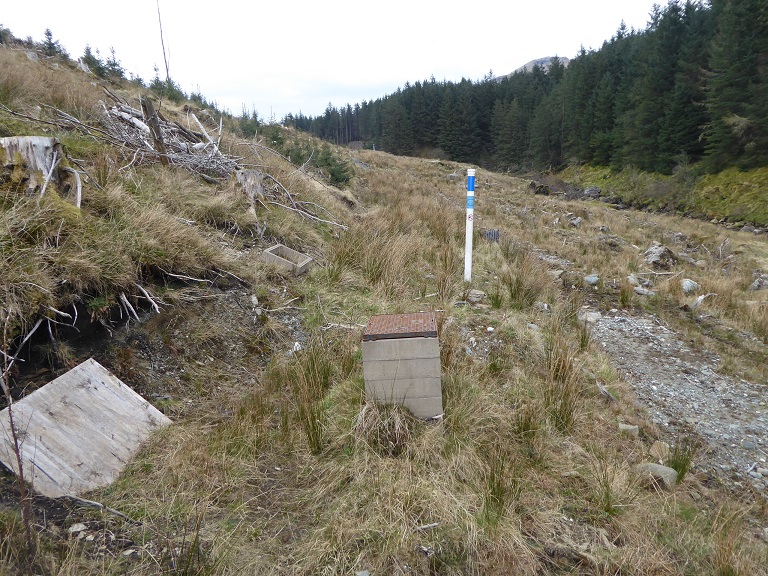
The hydro scheme could have provided an opportunity to rescue the west bank of the Donich Water from the ravages of industrial forestry but has instead has made it worse.
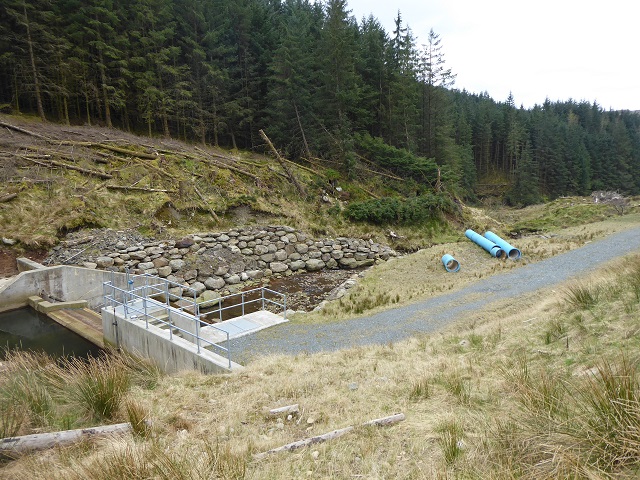
The intake was supposed to be screened but there has been little attempt to do so and the rip rap bouldering along either side of what remains of the river below presents the usual mess. Note how there has been no attempt to make use of the trees felled on the far bank because of the hydro construction.

The wasteful practices of industrial forestry are also clearly visible just above the intake. Instead of trying to improve forestry within the National Park – and using planning applications such as this one to influence what Forest and Land Scotland does – the LLTNPA’s draft woodland strategy has endorsed the UK Forestry Standards under which this destruction and waste is allowed to happen (see here).
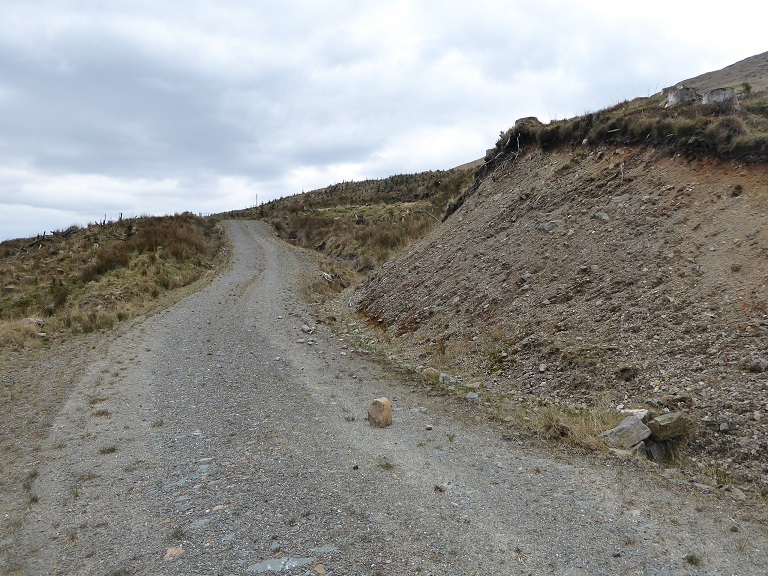
As part of the Planning Application the LLTNPA approved two new permanent forest track spurs built according to UK forest standards. No consideration was given as to whether those standards are compatible with the Park’s own best practice guidance on renewables which states that steep batters (as above) should be avoided completely and the width of new roads should be limited to 2.5m. This provides further proof that that the UK Forestry Standards are totally inappropriate for National Parks in Scotland.
It was a relief when I eventually managed to escape both the hydro and the forestry. The LLTNPA Board should take a visit and see for themselves the issues.
Conclusion
Not all hydro schemes on land managed by Forest and Land Scotland have been restored this badly. The contrast with the restoration of the Stank Glen hydro scheme, for example, by Ben Ledi is quite stark. The explanation appears to be that in Stank Glen Forest and Land Scotland has been converting industrial forest plantations to native woodland and as a consequence has taken an interest in both landscape and ecology. On Ben Donich, industrial forestry standards apply.
At Donich Water, the LLTNPA has really missed an opportunity to support the members of the local community who obviously care about the area and its wildlife and instead has been responsible for what one can only describe as a hydro disaster.